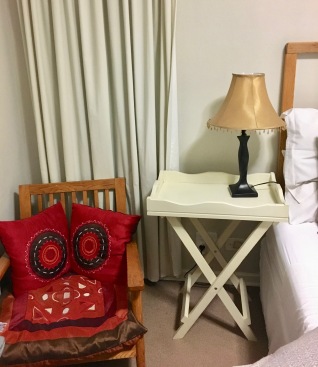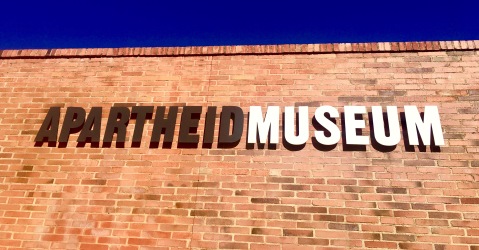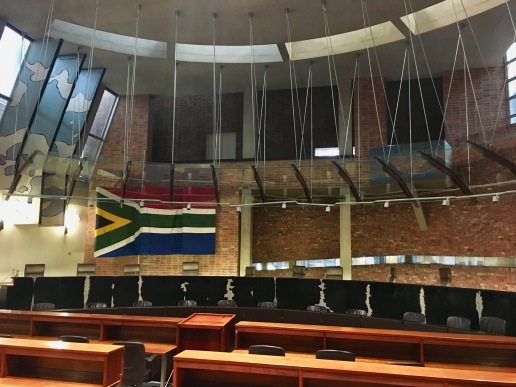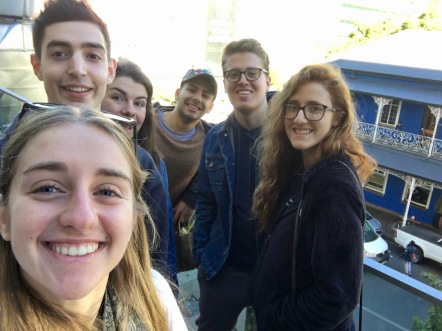Boarding my plane from Atlanta to Johannesburg, it hit me that I was alone. Quite similar to the feeling I had after getting dropped in my college freshman dorm room… which obviously only made me more anxious. However, after spending most of the flight sleeping and avoiding weird-looking airplane food, I found myself descending into Johannesburg amidst a beautiful South African sunset. My nerves immediately turned to anticipation, knowing there was so much more beauty to experience in this country.
I made it just in time to head over to dinner with the rest of the Emzingo fellows who had arrived that morning. Nine of the students including myself went back to our new home, Hampton Court. And through all of our jet lag, we managed to spend the night talking about our backgrounds and Johannesburg bucket lists, laughing, and creating a What’s App group for us to communicate. As I lay in bed, warmed in the African winter by an electric blanket, I didn’t know whether to feel safe and protected or uneasy and vulnerable. Driving through Johannesburg, all of the homes have large walls around them topped off with spiky barbed wire. I’d heard that the fences inherently create a barrier between those who have “stuff” and from those who do not. This divide and my new lack of clarity in my safety left me feeling curious about what other divides I would soon find between the citizens of South Africa.

We woke up early the next day to visit the Apartheid Museum. Upon arriving, I was surprised to see the museum juxtaposed by the nearby amusement park with a large Ferris wheel and other rides looming in the distance. After doing some research online, I traced this back to the government’s decision in 1995 to specify that anyone who wanted a casino license had to have a way to attract tourism and encourage job creation within South Africa. A group called Gold Reef City placed a bid which contained a promise to build a museum. The rest is history and the nearby Gold Reef City Casino and Amusement Park built and paid for the construction of the Apartheid Museum. I learned so much and felt moved by my experience at this museum and was surprised that the inherent reason for its construction was driven by something so disparate with the purpose of the museum.

We entered the museum based upon our classification assigned to us on our ticket, “white” or “non-white.” The two entrances created separate walkways that followed the same path. In between the hallways were the identification cards of South African citizens and although everyone could see the identification cards, it became evident that those in the non-white pathway were farther away from the informational panels and had a harder time reading it, making the segregation this country faced apparent. The identification cards of South African citizens, displayed in the middle were the common ground between the “white” and the “non-white” hallways. I was surprised to learn that the cards displayed the race the government “assigned” you. One method that the apartheid system used to classify people was called the “pencil test.” This test said that if a pencil could be held in one’s hair when they shook their head, they could not be classified as white.
The museum also went through the resistance to apartheid, the life of Nelson Mandela, and the country’s transition to democracy in 1994. The history of South Africa is full of struggles and learning more gave me better context to the culture and even the business climate I have found myself in. Although the apartheid system is over, it is clear that the country is still far away from equality for all.
The following day we visited Constitution Hill. Constitution Hill is a living history museum that explores South Africa’s narrative of their shift to democracy. The musuem is a former prison and military fort remembered for vile conditions and housing an overflow of apartheid law violators, from mild to severe violations. Both Nelson Mandela and Mahatma Gandhi were imprisoned here at one point. Today, the hill also hosts the country’s Constitutional Court, the highest Court in South Africa, which advocates for the rights of all citizens. I left feeling hopeful knowing that the same location that once generated so much repression and racism now is the home of a constitutional democracy fighting for citizens’ rights.

A couple days later we visited a start-up incubator/co-working space to attend #FuckUp night, a night where entrepreneurs share their stories of failure. We all enjoyed hearing their stories and learning more about the South African start-up ecosystem. However, towards the end one of the white, female entrepreneurs shared that she believed that she would have been more successful if she were black. The conversation went on as normal but I couldn’t help but feel shocked that such a comment felt almost accepted as normal. Some of my friends and I approached her after and asked her to unpack her statement that she would have been more successful if she were black. She went into a long winded answer but ultimately shared that Broad Based Black Economic Empowerment (B-BBEE) meant that it was “harder for white South Africans to get jobs because the blacks are taking all of the jobs.” B-BBEE is South Africa’s approach to empowering previously disadvantaged groups of people, to develop the economy. In today’s business climate, it is pertinent that companies operating in South Africa are B-BBEE compliant. The policy behind compliance involves a complicated score card and ultimately gives higher points to companies that employ Black South Africans. We had a conversation with some of our leaders and she mentioned that this feeling of resentment is very common amongst White South Africans. My friends and I left feeling shocked and uncomfortable, knowing that the apartheid system ended only 24 years ago, we could only wonder how someone lacked the ability to be so blind to their own privilege. Although this situation felt honestly disheartening, it reminded us all to check our own privilege and to leverage our own privilege to promote those who are less fortunate.
Saturday morning we went to the cutest Neighbourgoods Market in Braamfontein (the hip area my internship is!) and got the cutest hot chocolate, amazing falafel, and some awesome South African sauces to cook with. Best part was we got to keep the mason jar mugs!! We will be sure coming back here on the weekends!
Sadly, that evening I had my phone pick-pocketed 😦 It is such a violating feeling to have something stolen right off of you– I am just extremely grateful that I was harmed in no way. In terms of my phone, I’ve always found it discouraging when people live their lives through their smartphones and fail to look up and see the world around them. However, after having no smart phone, I’ve truly realized the extent to which our lives are engrained into them. Without my phone, I’ve been unable to Uber to the gym or to go get groceries, make plans with friends, or easily Google Maps it to anywhere in Jo-burg. This has forced me to be reliant on other people but also more reliant on myself to appreciate the downtime and moments I have to synthesize my thoughts rather than play a game or Snapchat for those five minutes in between daily activities.
I started my internship this past Monday and this weekend my friends and I are attending an England v South Africa rugby game and are taking our first road trip to the Cradle of Humankind! Stay tuned!!



You write very well! Fascinating account of apartheid as modeled by the museum. I had a similar, jarring experience when I was in Bonaire. They have restored the slave huts, until you see or experience these things you just can’t fathom it. Enjoy your experience. All the best!
LikeLiked by 1 person
I love your writing and your insights, Sophia. Thank you and please keep sharing your thoughts on social media. Have an amazing time.
LikeLiked by 1 person